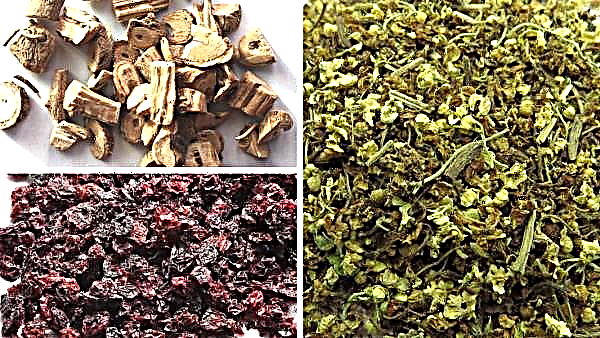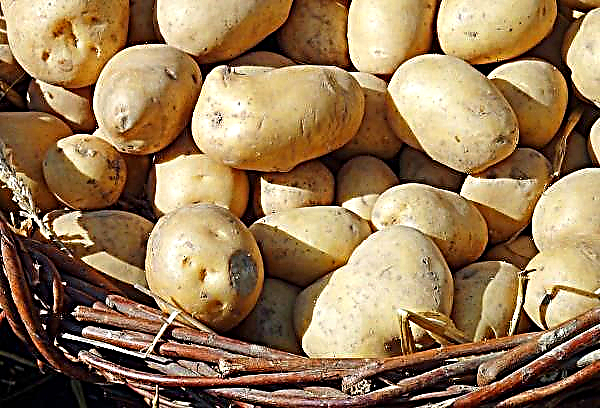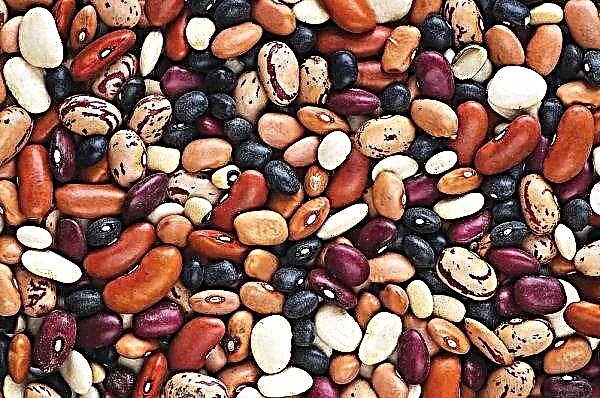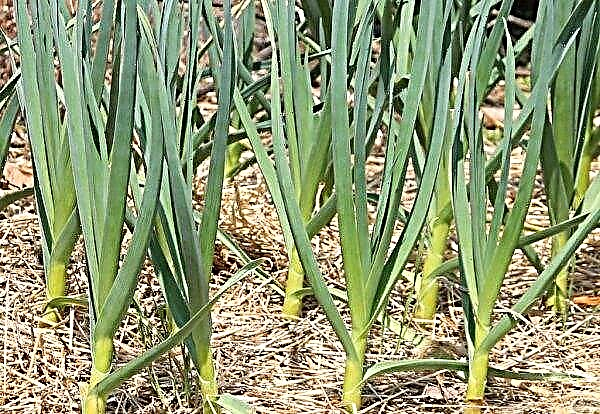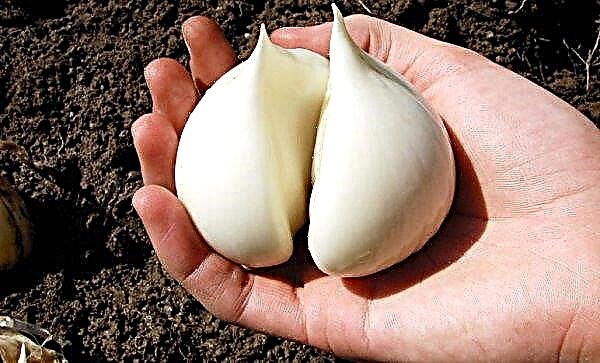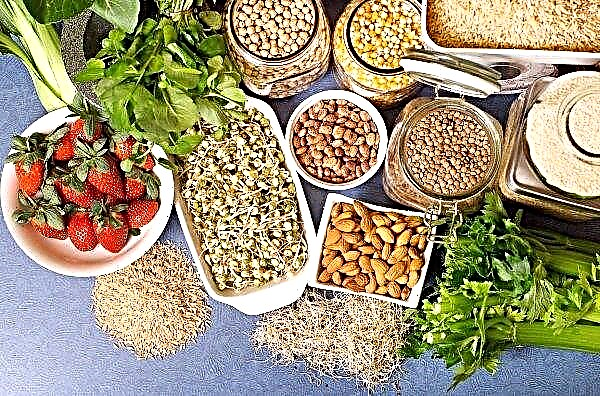Recently, among gardeners, giant varieties of tomatoes have gained great popularity. Their fruits are always juicy, fleshy, sweet, perfect for fresh consumption. Among these varieties, the Giant Novikova stands out, which is described later.
History of Variety Breeding
The cultivator was engaged in by the Soviet amateur breeder A. Novikov. His brainchild was registered in 1990, but was not included in the State Register.
Description and characteristics of the variety
The tomato bush is indeterminate, grows up to 200 cm. Its stems are thin, covered with small green leaves with a fibrous surface. The variety grows well both in the greenhouse and in the open ground, but in fruithouses it produces worse fruit. Able to bear fruit before frost.
Productivity
Each brush of the bush consists of 4-5 fruits, the average weight of which is 500-600 g. Therefore, from one such plant you can collect 4 kg of tomatoes.
Important! If the conditions are suitable and the crop is properly cared for, then from one bush you can collect 6–9 kg of fruit.
Description of the fetus
Ripe fruits are painted in a deep raspberry color. Their shape is flat-round, the ribs are well defined. The skin is thin and often cracking, exposing the fragrant, juicy, sweet, fleshy flesh. The maximum weight of the fetus can be 1–1.3 kg.
Video: Tomato variety Giant Novikova
Advantages and disadvantages of the variety
- The advantages of tomato Giant Novikov include:
- good taste, rich aroma;
- large fruits;
- resistant to many diseases and pests;
- fruits contain a lot of nutrients;
- drought tolerance;
- if the tomatoes are picked early, they will tolerate long transportation.
- Disadvantages:
- due to the thin skin, ripe fruits are not stored for a long time;
- tomatoes are not suitable for preservation, as they do not fit whole in the jar;
- the variety is very sensitive to temperature extremes;
- needs nutritious soil.
Acceptable timing for growing
The timing of planting seeds for seedlings depends on where the planting of the seedlings is subsequently planned - in open or closed soil. If you plan to plant in a greenhouse, it is carried out somewhere in mid-May. At this point, the seedlings should be 60 days; therefore, sowing should be carried out in mid-March. Tomato is planted in open soil in early June, so crops are carried out in late March - early April.
The basic rules of growing
The rules for growing seedlings are the same, for further planting in a greenhouse, or in open ground.
Growing seedlings
Seeds purchased at the store a day before planting are soaked in a growth stimulator. If the seed was collected independently, it must first be checked for germination and disinfected. To do this, the seed is soaked for a quarter of an hour in a weak solution of potassium permanganate - suitable for planting material will settle to the bottom. After it is washed under water.
Planting is carried out in seedling boxes filled with nutritious soil mixture. It can be purchased at the store. Grooves are made in the ground with a depth of 10 mm, and seeds are laid out in them, with an interval of 10 mm. From above they are sprinkled with earth, watered and covered with a film. The box is located in a warm, dark place. With the advent of seedlings, the film is removed, and the seedlings are transferred to a well-lit place with a slightly lower temperature.
When the seedlings grow two true leaves, they are dived into separate containers, with a volume of at least 500 ml. This is necessary so that a powerful root system has room for development.
Seedlings are watered as the soil dries, they are fed one-time, shortly before planting in the ground.
Preparation of soil for planting seedlings
In the garden where tomatoes will be planted, the soil is cleared of weeds and the remains of other plants. Checks for pests in the ground. If the soil is weakly loose and poorly retains moisture, add perlite and vermiculite. The land must necessarily be nutritious and with neutral acidity; therefore, organic matter, peat and wood ash are added. You can add sand.
Important! When planting tomatoes in open ground, the garden bed is prepared in the place where the following crops used to grow: cucumbers, zucchini, pumpkin, cabbage, carrots, squash.
Seedling Planting Technology
Seedlings are planted in such a way that there are 3-4 bushes on one square meter of the bed. From cups, seedlings are transferred to a hole by transshipment. A manure bucket, half a liter of ash and a handful of complex fertilizers are pre-introduced into it. The seedling is carefully sprinkled with earth and rammed.
Features of care for tomato culture
Tomato Giant Novikova is very demanding in care. Without following all the rules, you cannot get a good harvest.
Watering rates
The first time the plant is watered immediately after planting in the ground, and very abundantly. Then for two or three days he is not bothered. All subsequent irrigation is carried out with an interval of 3-4 days (adjustment is carried out depending on weather conditions). While the bush is young, 2-3 liters are enough for him; an adult plant needs at least 10 liters. Water should be warm.
Did you know? In 1776, when the northern colonies of England were actively fighting for their independence, the cook of George Washington decided to poison him. He cooked a magnificent roast and generously decorated it with tomatoes, seriously believing that this vegetable is poisonous (in those days it was considered a well-known fact). Being completely confident in the outcome of the matter, he even wrote a corresponding report to the commander of the English royal troops.
Top dressing
Over the entire growing season, the culture must be fed three times:
- The first time fertilizers are applied after a week and a half after planting seedlings in a permanent place. Nitrogen mixtures or organics with a high nitrogen content are used.
- The second top dressing is carried out at the beginning of the flowering period. Superphosphates, potassium monophosphate are introduced. Dosage is calculated according to the instructions on the packaging.
- The last time the bush is fed with the appearance of an ovary on it. It is advisable to use nutrient mixtures to increase productivity.

Pasynkovka and formation of a bush
Since the fruits of Giant Novikov are very large, it is necessary to normalize the ovary. On the lower hands, it is recommended to leave 3-4 ovaries. The removal of the lower foliage covering the stem below the first brush is also performed. This will reduce the likelihood of illness.
The formation of the bush is carried out in 2-3 stems, but you do not need to rush to pinch all the shoots. The variety is characterized by a long fruiting period, so you need to leave the opportunity for the formation of late ovaries.The bushes are tall, so they necessarily need to be tied.
Soil weeding
Loosening and weeding the soil is carried out along with irrigation. Only a thin top layer fluffs up so that a crust does not form, which prevents air exchange.

Grade Diseases and Pests
Variety Giant Novikova bred resistant to various ailments. Nevertheless, preventive measures must be carried out necessarily. A week before transplanting seedlings to a permanent place, the soil is treated with a 5% solution of copper sulfate. A weak solution of potassium permanganate is poured into the wells during planting (2 g per 10 l of water).
If the soil is very waterlogged and loosening is carried out in time, then the plant may be affected by root rot. If problems are found, they reduce the number of irrigations, the earth is loosely cultivated and raked from the bushes. Peat mixed with sand and fine sawdust is poured in its place.
If tomato beds are located near potato beds, you can find the Colorado potato beetle on them. For its destruction, the insecticide "Prestige" is used.
Did you know? Tomatoes — the most popular vegetable crop in the USA. It growing nand 93% of the total number of private gardens.
Rules for the collection and storage of tomatoes
Fruits ripen 110-120 days after planting. It is better to collect them in the stage of technical ripeness so that they can lie down until late autumn, ripening gradually. Stack them in a dark, cool place, away from other vegetables that can accelerate the ripening process.
Tomatoes of the Giant Novikov, although they grow very large, but their taste is excellent, juicy, sweet. They are great for fresh consumption, and the canned food prepared with them will be the highlight of your table.

